Rabbits
Poultry
Laying hens
Quails
Guinea pigs
Pigs
Ostriches
Sheep and goats
Pigeons
Pheasants
Forest animals
Pig breeds used in bio-breeding
In December 2020, fifty-three pig farms in the country were under the organic farming regime. Most of them are breeding black-footed pigs, which have been classified as genetic resources since 1992. The Hungarian curly-coated pig is a similarly hardy and undemanding breed, which is also growing in popularity with our breeders.
Preštice black-footed pigs
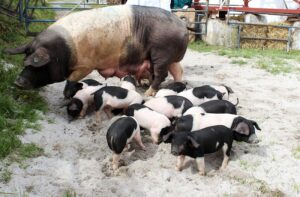 The Preštice black-legged pigs (Pc) represent a breed of medium body frame with a flap ear. Boars reach an average weight of 275 kg, sows are about 30 kg lighter. In terms of performance, it is a meat-eating type with a higher proportion of back fat. The robust constitution and adaptability predispose the Przeštice pigs to a more extensive form of production using pastoral farming. In our climatic conditions, this fattening technology can be used during the growing season, i.e. from May to October. It compensates for the poorer results in growth and conversion by its low nutritional requirements. In addition, grazing has a positive effect on the overall state of the pigs’ immune system. This, together with the fulfilment of ethological needs, enables the breed’s production capacity to be used effectively.
The Preštice black-legged pigs (Pc) represent a breed of medium body frame with a flap ear. Boars reach an average weight of 275 kg, sows are about 30 kg lighter. In terms of performance, it is a meat-eating type with a higher proportion of back fat. The robust constitution and adaptability predispose the Przeštice pigs to a more extensive form of production using pastoral farming. In our climatic conditions, this fattening technology can be used during the growing season, i.e. from May to October. It compensates for the poorer results in growth and conversion by its low nutritional requirements. In addition, grazing has a positive effect on the overall state of the pigs’ immune system. This, together with the fulfilment of ethological needs, enables the breed’s production capacity to be used effectively.
The main advantage of outdoor reared pigs is that they are more vital compared to conventional animals. Their meat is also nutritionally more valuable and, according to analyses, contains a higher proportion of health-promoting substances such as unsaturated fatty acids and minerals. The meat of ‘Preštice’ pigs in particular is valued for its high proportion of intramuscular fat, which gives it its succulence, tenderness and flavour.
Mangalica
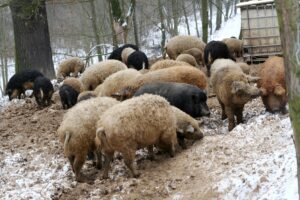 The Mangalica, or curly pig, is a late fattening utility breed originally from Hungary, which was classified as a gene reserve in 1974. As a result, this primitive breed of pig with a flap ear was saved and was able to spread to other countries, including the Czech Republic. In its country of origin, it is bred in three colour varieties, namely fawn (szőke), rusty red (vörös) and fecskehasú.
The Mangalica, or curly pig, is a late fattening utility breed originally from Hungary, which was classified as a gene reserve in 1974. As a result, this primitive breed of pig with a flap ear was saved and was able to spread to other countries, including the Czech Republic. In its country of origin, it is bred in three colour varieties, namely fawn (szőke), rusty red (vörös) and fecskehasú.
The breed has a medium to large body frame with a height at withers of up to 85 cm. Adult pigs weigh up to 350 kg, with boars being heavier. The typical long wavy coat protects the mangalitsa from the cold and, because they molt, they do not mind the summer heat. As a result, these pigs can be kept all year round on pastures with simple shelters. Hungarian curly-coated pigs are also said to be easy to feed and to get by on grazing. However, these pigs would not make a living from grazing on grass alone and must, of course, be fed on roughage.
Mangalitsa is characterised by low fertility with five to eight piglets per litter, which have a low growth capacity. Compared with conventionally fattened pig genotypes, they reach a slaughter weight of around 140 kg in approximately three times as long, i.e. at 15 months of age at the earliest. In contrast, commercial pig farms usually slaughter pigs between 115 and 120 kg in five months! On the other hand, magalica compensates for its lower productivity by its adaptability and resistance to stress and disease. Its very tasty and succulent meat, which is used to produce traditional Hungarian specialities such as Hungarian salami and čabajka, is also sought after.
Related posts
24. August 2021
In December 2020, fifty-three pig farms in the country were under the organic farming regime. Most of them are breeding black-footed pigs, which have been classified as genetic resources since 1992. The Hungarian curly-coated pig is a similarly hardy and undemanding breed, which is also growing in popularity with our breeders.
25. May 2021
In the Czech Republic, breeders work with sire breeds (currently represented, in particular, by White Sire, Duroc and Piétrain), including their synthetic lines (SL 34, SL 38, SL 48 and possibly SL 68) and pig dam breeds.
18. May 2021
Commercial pig breeders use both breeds that excel thanks to their reproduction parameters and breeds that pass on to their offspring good growth abilities, resilience and good meat quality. As a part of the hybridisation programme, the Pig Breeders Association and breeders work with dam breeds (Czech Improved White and Czech Landrace) and sire breeds.
19. June 2020
In order to assure that the pigs are in a good state of health, it is essential to feed them grain feed as a basis. Selection of these feeds is limited not only by the farmer’s potential, but also the chosen farming method. For example, the rules of ecological farming place emphasis on providing organically…
11. May 2020
Pigs were gradually moved from outdoors into enclosed styes, which developed into sophisticated stye capacities utilising technologies not only for automated feeding and water supply systems, but also for controlling the stye environment, in commercial farms. Ecological farming trends have been popular for some time in Europe in relation to demand for healthy products from…
Related products
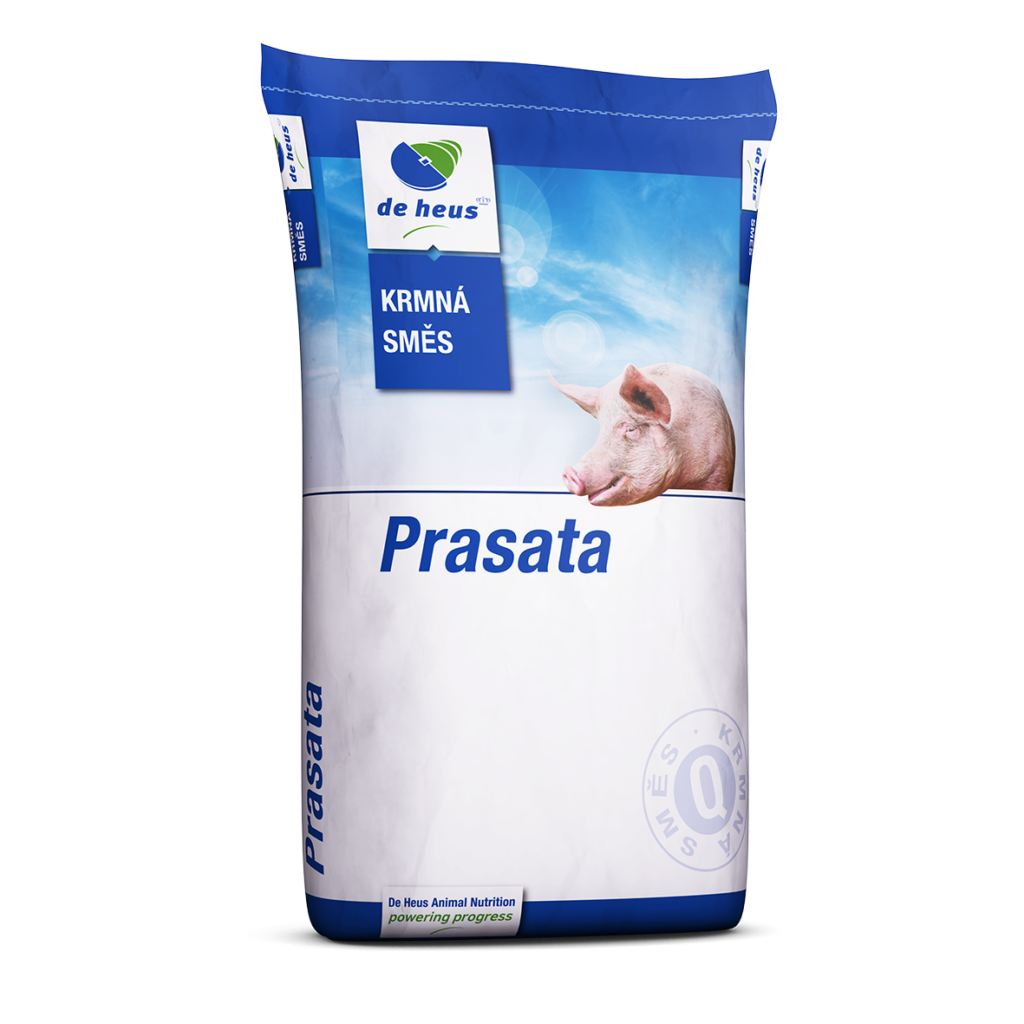
PIG UNI 15
A mashed concentrate for fattening pigs, which is mixed with cereals depending on the fattening phase in a ratio of 11 – 16 %. It is a garauntee of high growth.

A3 MAXI
A complete feed mix for fattening pigs over 60 kg. Its make up supports fast growth allied with low consumption of feed during the final phase of fattening.

A2 MIDI
A high quality granule for the feeding of pigs from 35 to 60 kg. A balance of the nutrients needed is the basis for an excellent state of health, fast growth and high meat content.

A1 MINI
Granulated feed mix for the first phase of fattening pigs, that is from a live weight of 15 to 35 kg. The nutrients it contains support an excellent state of health, fast growth and high meat content in your pigs.
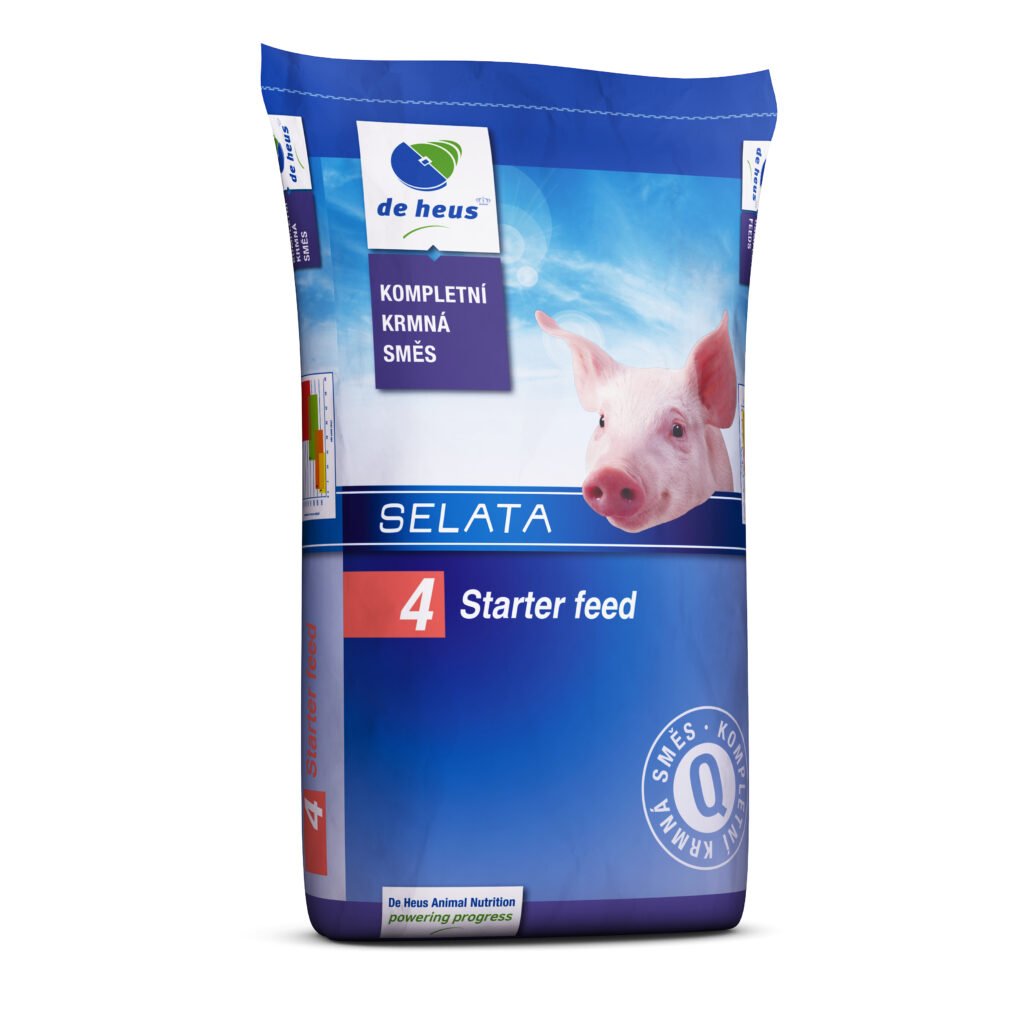
A1 START
A professional feed intended for weaned piglets with a live weight of 12 kg of up to 12 weeks of age. It provides an ideal start to piglet growth. This feed is followed by fattening mix A1 Mini or the Pig Uni 15 concentrate.
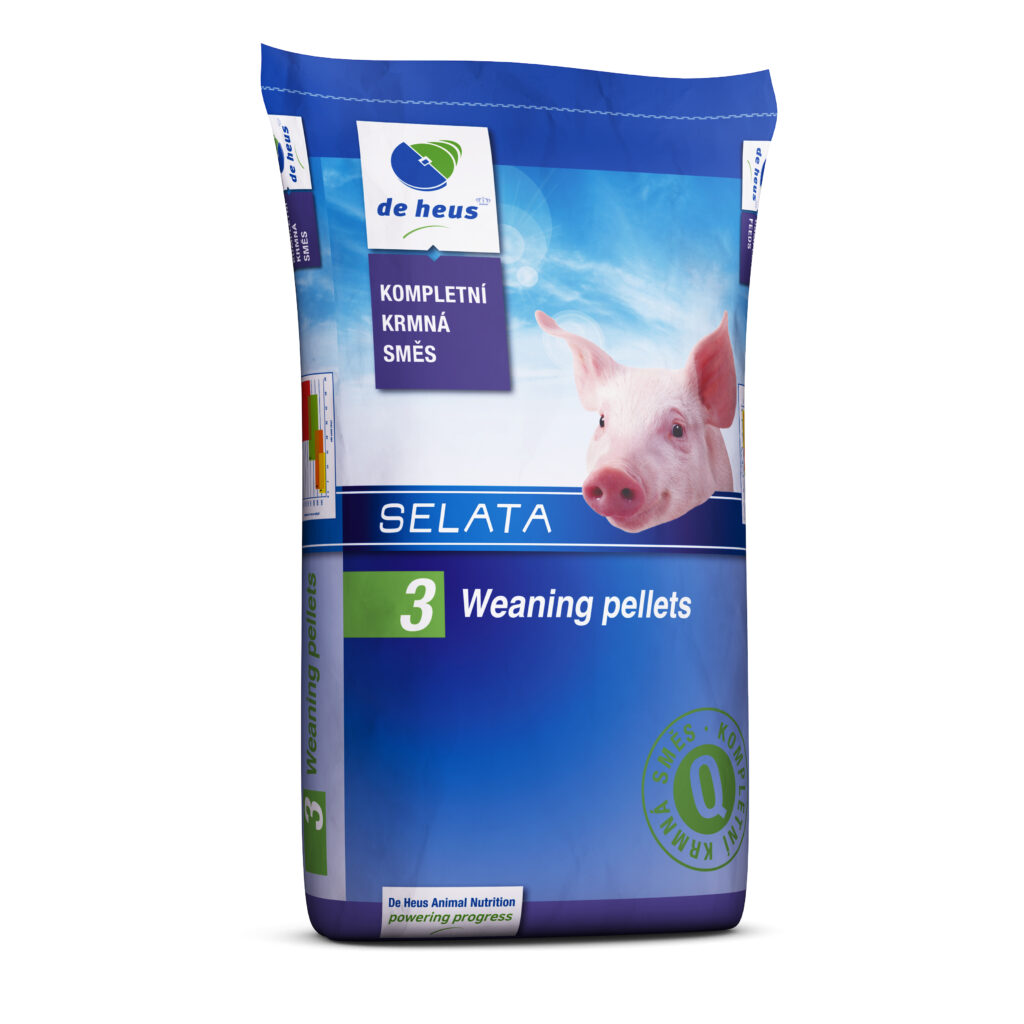
WEANING PELLETS
A prestarter for piglets from 10 days of age to 14 days after weaning from the sow. Its structure of 2 mm granules ensures problem free intake and overcoming the weaning period. Among other things it contains whey and fish flour which ensures fast growth in piglets.
